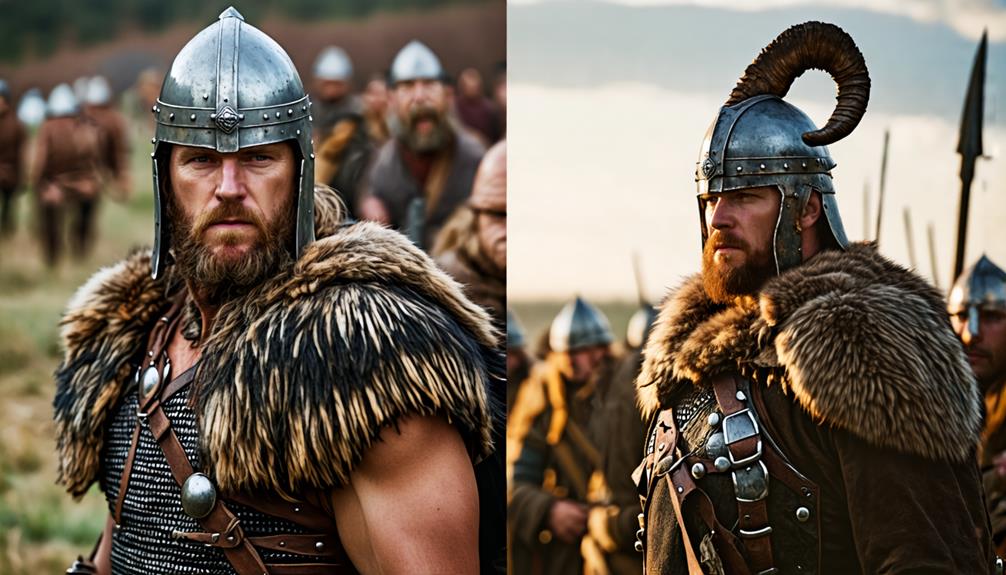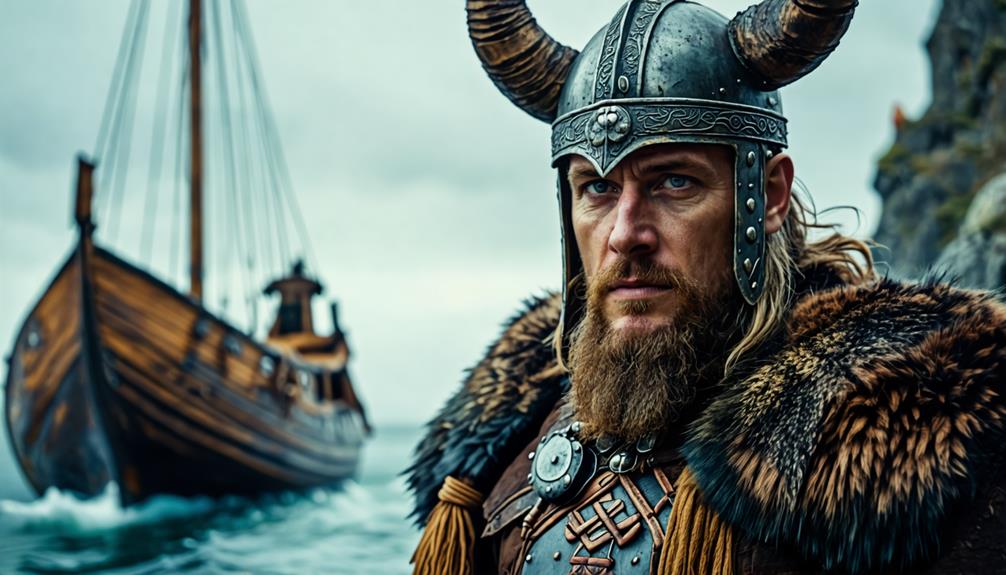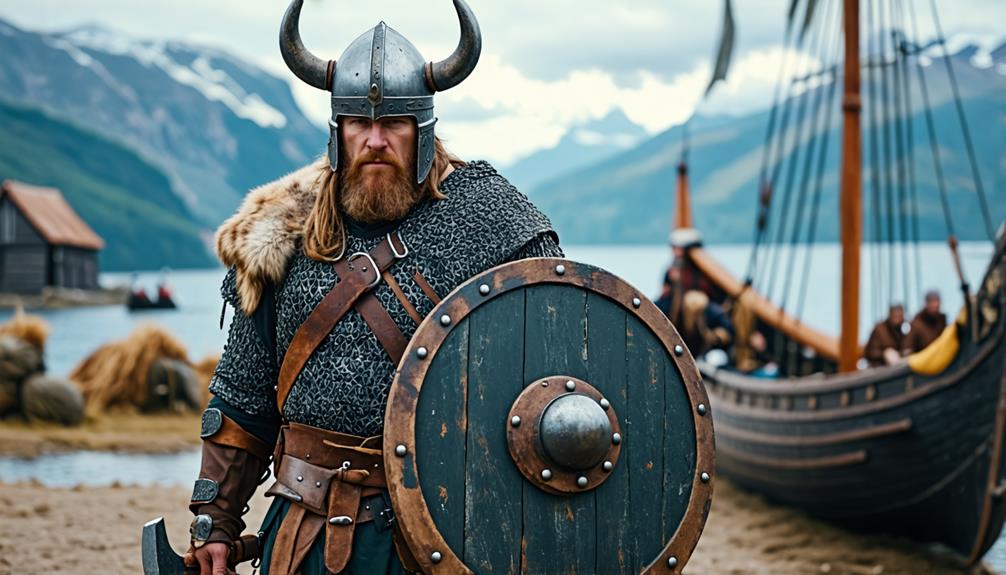You've probably seen countless depictions of Vikings sporting horned helmets, but have you ever wondered about the accuracy of this iconic image? It turns out that this widely accepted portrayal is largely a myth, perpetuated by 19th-century artistic interpretations rather than historical fact. The reality of Viking headgear is far more practical and nuanced than pop culture would have you believe. Understanding the truth behind this misconception not only sheds light on Viking culture but also raises questions about how other historical inaccuracies might be shaping our perceptions of the past. So, what exactly did Vikings wear into battle, and why has this myth persisted for so long?
Key Takeaways
- The horned Viking helmet myth originated in 19th-century popular culture, not historical fact.
- No archaeological evidence supports the existence of horned helmets in Viking culture.
- The only complete Viking helmet discovered (Gjermundbu helmet) lacks horns entirely.
- Viking helmets were designed for practicality and combat effectiveness, not ornamental purposes.
Origins of the Horned Helmet Myth

The myth of Vikings donning horned helmets took root in the 19th century, largely due to artistic interpretations rather than historical fact. You might be surprised to learn that this popular image originated from Richard Wagner's opera 'The Ring of the Nibelung.' Costume designer Carl Emil Doepler introduced horned helmets in the 1870s, sparking a trend that quickly spread through popular culture.
Despite the widespread misconceptions, archaeological discoveries have yet to unearth any Viking-era horned helmets. The only complete Viking helmet found, the Gjermundbu helmet, lacks horns entirely.
While horned headgear did exist in earlier periods, such as the Merovingian and Iron Age, these were likely decorative rather than functional combat gear. The absence of historical evidence hasn't stopped the persistent belief in Viking horned helmets, highlighting how artistic representations can shape our understanding of history.
Archaeological Evidence and Reality
Contrary to popular belief, archaeological findings paint a starkly different picture of Viking headgear than what you've likely seen in movies or TV shows. The reality is that Viking helmets were designed for practicality and combat effectiveness, not for show.
Archaeological evidence, particularly the Gjermundbu helmet, reveals that Viking helmets were typically rounded or conical in shape. These designs prioritized protection and functionality over decorative elements like horns.
You might be surprised to learn that no horned helmets have been discovered in Viking Age archaeological sites. In fact, only one complete Viking helmet has been found, and it lacks any horn attachments.
The absence of horned helmets in Viking burial contexts and key shifting regions strongly suggests that such items weren't part of a Viking warrior's equipment. Instead, Viking helmets featured practical elements like spectacle designs for facial protection, emphasizing their combat-oriented purpose.
Cultural Impact of Misconceptions

Misconceptions about Viking attire, particularly the iconic horned helmet, have profoundly shaped modern perceptions of Norse culture. Despite a lack of historical evidence, the idea that Vikings wore horned helmets persists in popular culture, overshadowing their true cultural achievements.
This misrepresentation has led to several consequences:
- Distorted public understanding of Viking society
- Oversimplification of Norse culture in media portrayals
- Undervaluation of Viking craftsmanship and technological advancements
- Perpetuation of stereotypes that hinder accurate historical interpretations
The reality, as exemplified by the Gjermundbu helmet, contrasts sharply with artistic interpretations that have dominated since the 19th century.
These misconceptions have made it challenging to appreciate the sophistication of Viking attire and their broader cultural contributions.
Efforts to promote accurate representations of Vikings are essential for fostering a more nuanced understanding of their legacy and dispelling long-held myths about their appearance and society.
Conclusion
You've learned that the horned Viking helmet is a myth. It's time to set the record straight.
Next time you see a Viking depiction, look for accuracy. Share this knowledge with others and challenge stereotypes.
By understanding the truth about Viking helmets, you're not just correcting a historical inaccuracy; you're gaining insight into a complex culture.
Let's appreciate Vikings for their real achievements, not Hollywood's embellishments.

Leave a Reply